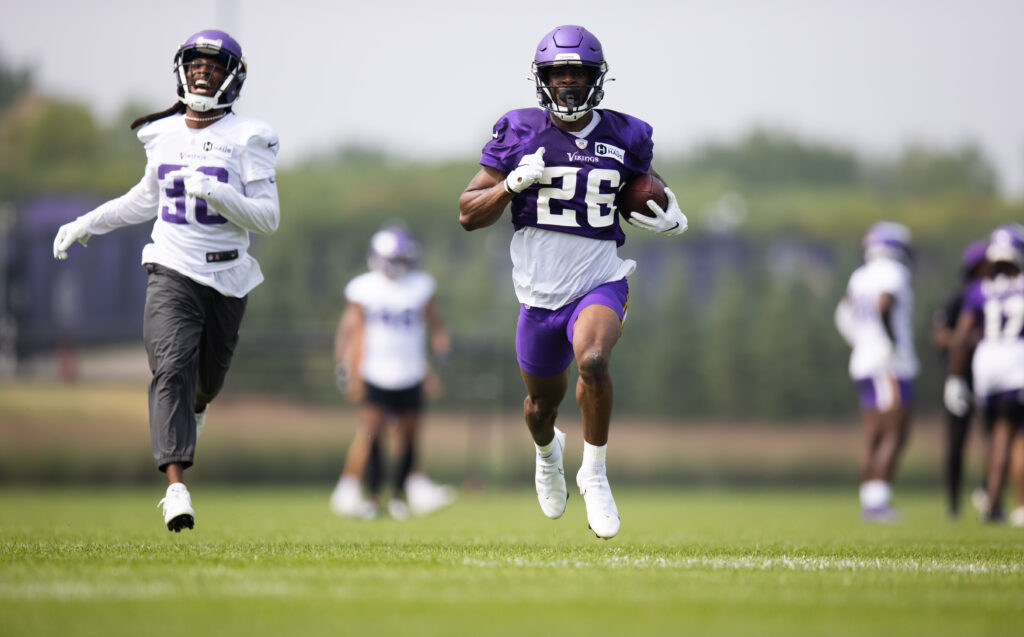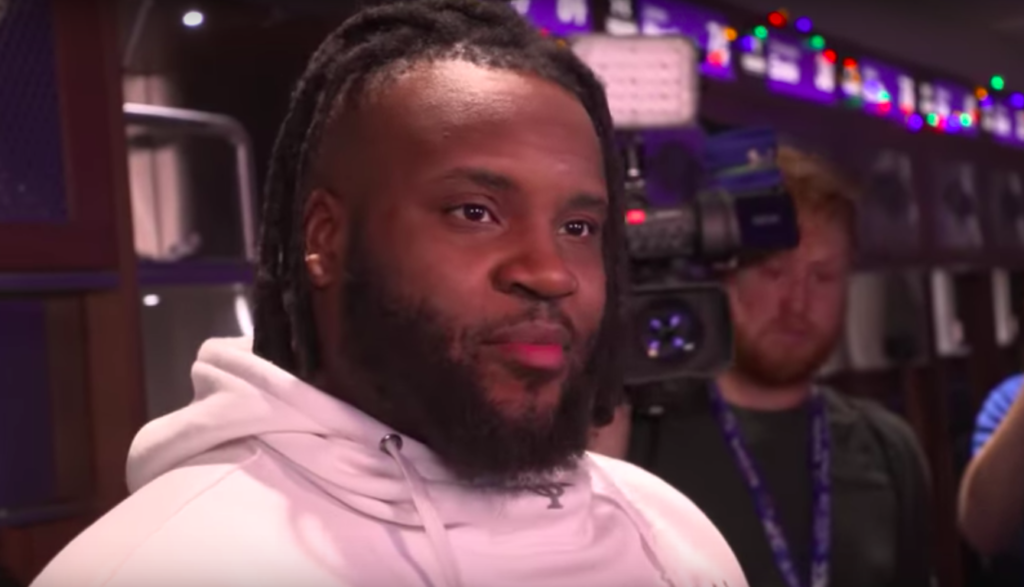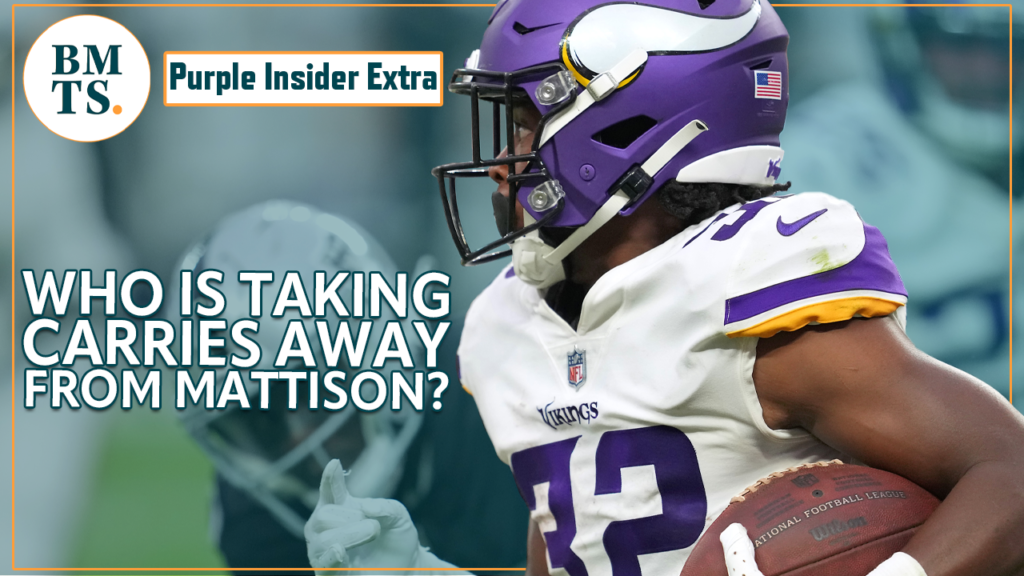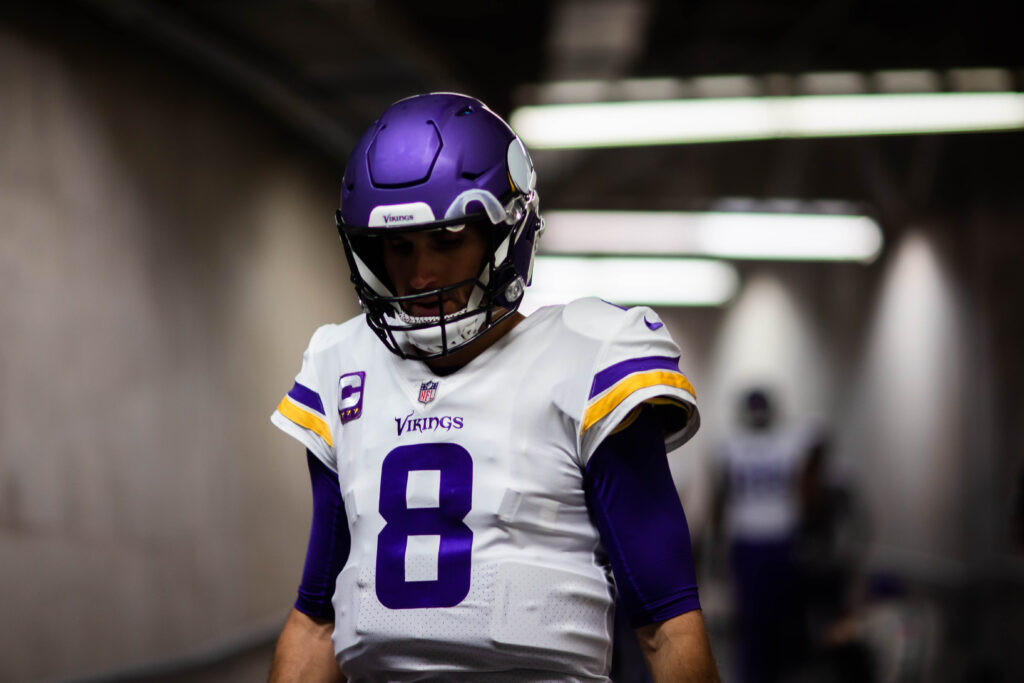EAGAN — In the final two days of the Minnesota Vikings’ spring program, the team ramped things up with a handful of last-minute drives. That was the most intense it got during the practices open to the media during OTAs and minicamp.
Throughout the last month of workouts, the Vikings only asked the pass rushers and offensive linemen to take the first step of each play, allowing the receivers and defensive backs/linebackers to practice routes and coverages at high speeds without a disrupted quarterback or a threat to injury in the trenches.
Head coach Kevin O’Connell that’s by design.
“You can say it’s football and you can say go 11-on-11 full speed, but you’re putting your team at risk in my opinion,” he said.
Rather than grade battles in the trenches without pads, the staff is looking at how defensive linemen are getting lined up and whether the offensive linemen are properly identifying the rushers and blocking the right opponents.
Even with the receivers and defensive backs battling against each other more than the big men up front, the amount of physical contact was very limited.
“Coach did a great job of explaining how he wanted practice to be,” cornerback Patrick Peterson said. “Coach made it very clear that no one is making [the team] or getting cut from the couple of practices that we are out on the field. We want to pretty much be above-the-shoulders emphasis. We want to see how we learn on the fly. How do we learn when it’s time to make a check? How do we learn? How do you adjust when offenses are shifting and you’ve got all the jet motions and things like that? This period was basically just a mental aspect of the game.”
The approach isn’t completely new to the Vikings. Last season Mike Zimmer reluctantly agreed to lighten the load, though he negotiated with the players to wear soft-padded helmets so they could keep the tempo high. The 2021 OTA/minicamp session was the first time Zimmer took his foot off the gas when it came to spring workouts. O’Connell’s outline for the May-June practice program is less a decision to acquiesce to players’ request as it is part of an overall analytical approach to keeping his team healthy long term.
“It’s been a balance the last couple years of trying to understand how to protect one another and pacing yourselves knowing all that matters is the games this fall,” quarterback Kirk Cousins said. “Trying to get as realistic of a look as you can to prepare. Finding that balance is always a little bit tricky, but anything from a walk through, to a jog through, to a full speed seven-on-seven rep, to telling the lines that they can go half speed and the skill positions can go full speed. We’re just trying to find that balance and whatever we’re doing is still beneficial, but we’re just trying to make sure we come out healthy and I think for the most part we were able to do that.”
The Vikings aren’t alone in studying the numbers to improve their overall health. Workload data has become commonplace around the NFL but the Los Angeles Rams have been one of the most notably committed teams to following the science. They have also been one of the most healthy teams in the NFL. Per the website ManGamesLost, the Rams lost the fifth fewest man games to injury and only four of the 15 most injured teams in the NFL made the playoffs last year. O’Connell is trying to emulate the Rams’ effect on health in Minnesota while still teaching his system.
“Ultimately you get the OTA’s and the minicamps to kind of get those looks and start really evaluating the guys’ ability to retain information, maybe not always full speed, but we got enough good work in, especially in the pass game, to feel like our systems are where we want them on both sides,” O’Connell said.










